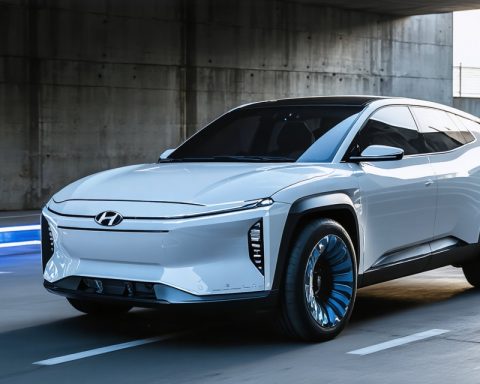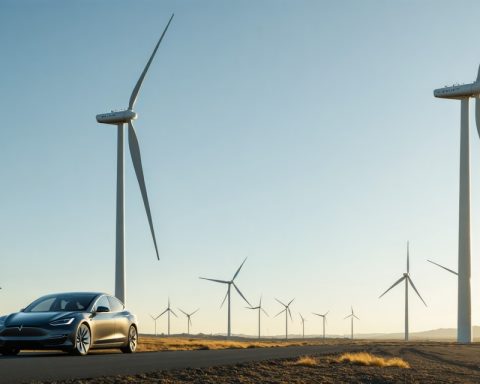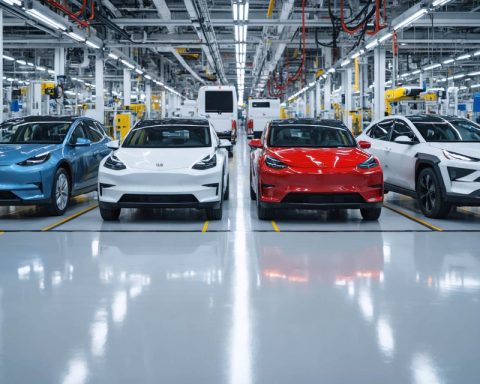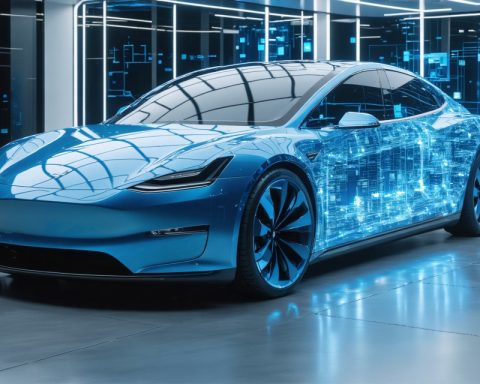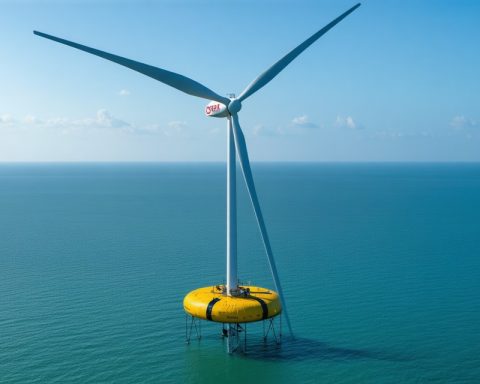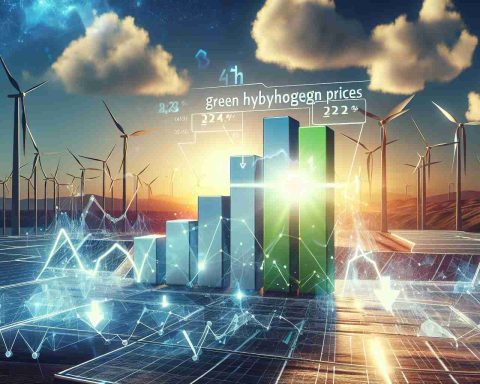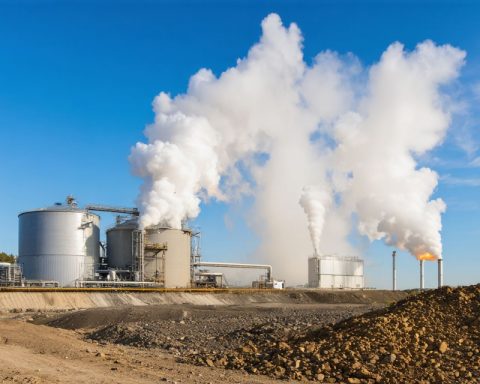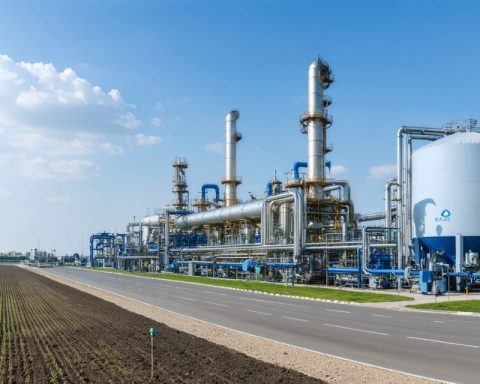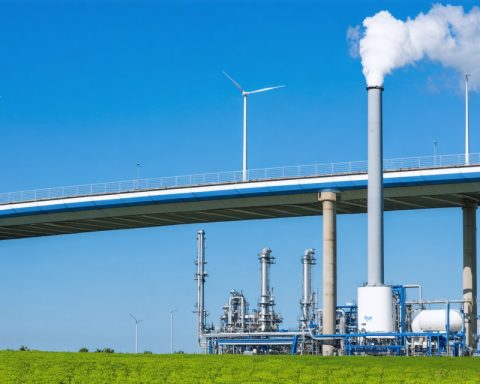- Air Liquide and TotalEnergies advance Europe’s carbon-neutral goals with two major hydrogen projects.
- The ELYgator project, a 200MW electrolyzer in Rotterdam, converts offshore wind energy into low-carbon hydrogen.
- The hydrogen network supports industries and vehicles in the Netherlands and Belgium, aiming for a greener future by 2027.
- A 250MW electrolyzer in Zeeland, expected by 2029, will produce up to 30,000 tons of hydrogen annually.
- These projects highlight the immediate importance of green fuel solutions in industrial evolution and environmental sustainability.
A grand vision of a carbon-neutral Europe inches closer to reality as Air Liquide and TotalEnergies set sail with two colossal projects, harnessing the power of hydrogen. The winds of change blow across the North Sea, feeding the innovative ELYgator, a massive 200MW electrolyzer anchored in the bustling energy hub of Rotterdam. This industrial behemoth shoulders the task of transforming renewable energy from the great offshore wind farms into a steady stream of low-carbon hydrogen.
Picture this: a fleet of industries and heavy-duty vehicles across Europe, once reliant on fossil fuels, now draws cleaner breath thanks to these ambitious projects unfolding in the heart of the continent. Air Liquide’s intricate hydrogen network stretches across borders, offering its bounty to the Netherlands and Belgium while turning the gears of industry and transportation toward a greener future. This hydrogen tapestry, fueled by the might of OranjeWind and Hollandse Kust Zuid, will be woven by the end of 2027, marking a milestone in sustainable innovation.
Yet, the journey doesn’t stop there. Air Liquide and TotalEnergies venture hand-in-hand to Zeeland, birthing a formidable 250MW electrolyzer planned to be operational by 2029. This joint endeavor promises up to 30,000 tons of hydrogen annually, shimmering with the promise of a decarbonized dawn.
As these projects unfold, they underscore a vital truth: innovating green fuel solutions is no longer a future dream but a present reality, essential to rewriting the handbooks of industrial evolution. The dawn of this hydrogen revolution beckons—a clarion call to industries worldwide to embrace the sustainable path, fueling not only machines but the very future of our planet.
The Hydrogen Revolution: Will It Redefine Europe’s Energy Landscape?
How-To Steps & Life Hacks: Leveraging Hydrogen Technology
1. Understand the Production Process: Hydrogen can be produced via various methods, with electrolysis being one of the greenest when powered by renewable sources like wind or solar. The key steps include water splitting into hydrogen and oxygen using an electrolyzer.
2. Set Up Infrastructure: For businesses looking to adapt, investing in proper storage and pipeline facilities is essential. Partnering with companies like Air Liquide can provide expertise and infrastructure solutions to efficiently distribute hydrogen.
3. Transition Your Fleet: Explore hydrogen fuel cells for transportation. Convert traditional vehicles or invest in hydrogen-ready equipment for zero-emission logistics.
4. Government Grants and Subsidies: Look into local and international grants encouraging hydrogen adoption, such as the Horizon Europe program, which provides funding for clean energy initiatives.
Real-World Use Cases
– Industrial Applications: Industries such as steel manufacturing and chemical production are integrating hydrogen to reduce carbon emissions. The conversion process minimizes reliance on coal and natural gas.
– Transportation: Companies like Nikola and Toyota are developing hydrogen-powered trucks and buses, offering long-range and fast refueling—optimal for intensive transport operations.
– Energy Storage: Excess renewable energy can be stored in hydrogen form, providing a reliable backup during demand spikes or renewable energy downtimes.
Market Forecasts & Industry Trends
The hydrogen market is projected to reach $201 billion by 2025, according to the Hydrogen Council. The European strategy arms itself with a commitment to significantly increase hydrogen production capacity, driven by national policies and international collaborations.
Reviews & Comparisons
Hydrogen vs. Electric Vehicles (EVs):
– Efficiency: EVs are more efficient at converting energy to power, but hydrogen vehicles offer quicker refueling and longer ranges.
– Infrastructure: The EV charging network is currently more developed than hydrogen refueling stations, but investments are ramping up for the latter.
Controversies & Limitations
– Cost: Hydrogen production remains expensive compared to traditional fuels and EV options. The cost of developing infrastructure is significant.
– Energy Input: Electrolysis requires large amounts of energy, currently offset by renewable sources only in some regions.
Security & Sustainability
Hydrogen is non-toxic and disperses quickly in the event of a leak, but storing and transporting it at high pressures requires careful engineering and safety measures. Sustainability is greatly enhanced when hydrogen is produced using renewable energy, providing a truly green cycle.
Insights & Predictions
Europe is poised to become a leader in hydrogen innovation, driven by its legislative push and collaborations among key industry players. The demand for green hydrogen in industrial and transportation sectors will surge as technology evolves and costs decrease.
Tutorials & Compatibility: Implementing Hydrogen Solutions
– Step-by-Step Guides: For businesses considering hydrogen, start with a pilot project. Work with experts to assess energy consumption, feasibility, and potential return on investment.
– Compatibility Assessments: Evaluate existing infrastructure and adapt operations gradually to integrate hydrogen, leveraging hybrid models where possible.
Pros & Cons Overview
Pros:
– Renewable: Potential for reducing fossil fuel dependence and lowering emissions.
– Versatile: Usable across various industries and transport sectors.
– Energy Storage: Bridges gaps in renewable energy supply.
Cons:
– Infrastructure: Still developing compared to traditional fuels.
– Cost: High initial investment and production costs currently present hurdles.
Actionable Recommendations
– Stay Informed: Engage with industry webinars and conferences on hydrogen technologies.
– Explore Partnerships: Collaborate with leading hydrogen firms like Air Liquide to access infrastructure and expertise.
– Advocate for Policy: Support initiatives that promote hydrogen energy adoption at local and national levels.
For more insights into energy innovation and sustainable practices, visit Air Liquide and TotalEnergies. These industry leaders offer a wealth of resources and stakeholder engagement opportunities as the hydrogen economy expands.

